人教版新目标初中英语八年级上册Can you come to my party教案3篇
-
- 页数:17页
- 字数:约 18101 字
- 大小:98.50KB
- 格式:.doc
- 版本:Office2016及以上版本
- 作者:Tovelo_PPTer
Can you come to my party教案3篇
Can you come to my party教案一
I. Analysis of the Teaching Material
1. Status and Function
The topic of this unit is about invitation. It teaches thestudents how to give or receive an invitation. It’s close to the everyday life.So we’d better raise the students learning interest first.

2. Teaching aids and demands
(1) Knowledge Objects
Studentsmust learn to make invitation. They must learn to say yes and say no to aninvitation and give their reasons.
(2) Ability Objects
Toimprove the students’ ability of listening, speaking, reading, writing.
(3) Moral Objects
Weteach this lesson in order to learn how to accept or refuse an invitation offoreign countries politely. It will teach the students good manners. If he orshe holds a party at home, He or she will feel happy when they can do somethingfor others.
(4) Teaching Key Points
Thekey vocabulary and the key phrases of this unit
(5) Teaching Difficulties
Usingthe target language to improve the abilities of the students
II. Target language
Can you come to birthday party?
Yes, I’d love to.
Sorry, I can’t. I have to look after mymother.
When is the party?
It’s at six on Monday.
III. Vocabulary
Tomorrow, weekday, invitation, match, whole,whom, another, concert, pity, free, American,
Chemistry, training…
IV. Learning Strategies
Inducting
Cooperating
V. Teaching procedures.
Itincludes five periods. (5个课时)
The First Period
I. Teaching Aims and Demands
Keyvocabulary and phrases
Targetlanguage
Toimprove the students ability of Listening and speaking
II. Teaching Key Points
(1) Key Phrases
Studyfor a test, have a piano lesson, go to the doctor, visit my aunt
(2) Target language
_Can you come to my party on Sunday?
_Sure, I’d love to.
_Can you come to my party on Sunday?
_Sorry, I have too much homework this weekend.
Ihave to help my mum.
Ihave to go to the doctor.
III. Teaching Difficulties
Using the target language to practice the oralEnglish in pairs
IV. Teaching Methods
Communicative methods
Pairwork
V. Teaching Aids
多媒体
VI. Teaching Procedures
Step 1
Beforethe class, let the students listen to the music, this can guide to the newlesson. After this, ask the
studentsto watch the movie, this can guide to the target language.
Step 2 (1a)
Learnthe phrases and do the exercise in 1a.
Theanswer is: b, d, a, c, e
Step 3 (1b and 1c )
Firstlet the students read the dialogue in the picture. Then listen to it. (Thisactivity provides guided oral practice using the target language). After thelistening practice, ask the student to practice some invitations and refusals.
Step 4 ( culture notes )
Whenyou are in foreign countries, you should know whether an invitation is a realinvitation. If you are invited, but not given a specific time, this is not areal invitation. For example, “Why not have dinner some day?” You mustn’t askwhen you can come. It’s not polite. This is a real invitation: “ Can you cometo my birthday party on Saturday night? When you are asked this way, you shouldonly say: “Yes, I’d love to”. Or “sorry, I can’t. I have to …” and give him orher your reason.
Step 5 (summary and homework)
Todaywe have learnt some key vocabulary and the target language. That is how toinvite somebody and how
torefuse an invitation politely. After class write the phrases in 1a in theexercise book.
Step 6 (Blackboard design)
Unit 5
How about…? polite
What about…?impolite
The second period
ITeaching aims and demands
1.Knowledge Objects
Keyvocabulary
Targetlanguage
Grammarfocus
2.Ability Objects_ Listening
II.Teaching key points
1. key vocabulary
hey,baseball game,too much homework
2. Target language
A:Hey, Dave! Can you come to the movies on Saturday?
B:I’m sorry, I can’t
Ihave too much homework.
Ihave to help my mum.
Ihave to go to my guitar lesson.
Ihave to visit my aunt.
IIITeaching difficulties
Grammarfocus
IVTeaching methods
Listeningand speaking methods.
Communicativeapproach
Pairwork.
VITeaching procedure
Step I
Greetthe class and check the homework
Step II(2a)
First, make the preparation for listening.Read the sentences twice to the class. The first time you can read “can”, thesecond time you can read “can”. Then let the students listen .
Theanswers for activity 2a are : 1. can’t ,2.can3. can’t 4. can’t 5.can
Step III (2b)
Aska student to read the sentences in the box.. Tell the students these are thereason why people can’t go to the party. Listen to the recording again andnumber the reasons 1~3 why they can’t go to the party .
Theanswers are :a . 2d . 3e . 1
Step IV (2c)
Thisis an oral practice about the target the language . You can ask the student ifthey can give other reasons besides the ones in 2a . If they can, make adialogue in pair . ( First , ask two who can do it well to make a modeldialogue , then let them do it in pairs .
Step V . ( Grammar focus)
First, let the students read the sentences in the grammar box . Then write “ have to, has to ” on the blackboard , and tell them they are used to say no to aninvitation . And then write “ be going to do something ” on the blackboard ,tell the students we can say no to an invitation by talking about the futureplan . After that , let them do exercises in order to master to the grammar .
Step V.Blackboard design
Unit 5
1. have to /has to + verb
They have to go to the acting lesson on Sunday.
Lucy has to help her mom with the housework.
Do they have to go to the acting lesson on Sunday.
Yes, they do. / No, they don’t.
Does Lucy have to help her mom with the housework?
Yes, she does. / No, she doesn’t.
2. Can you come to…? Sure, I’d love to. / Sorry, I can’t. I have to…
Can she come to…? No, she can’t. She has to…
Step VI . Homework
Please write as many reasons as you can torefuse an invitation
The Third Period
I Teaching aims and demands
1. Vocabulary and phrasesOral practice
2. Ability objects
Reading, writing, communicative competence
II.Teaching key Points
Reviewvocabulary items and grammar focus
III.Teaching difficulty
Oral practice using the target language
I.Teaching methods
Reading, writing methods and communicativeapproach
V.Teaching procedures
A computer
VI.Teaching procedures
StepI
Greet the class and let a student to make aduty report. And then check the homework
StepII (3a writing)
Show the invitation in 3a to the students. Askthe students to fill in the blanks according to the information of theinvitation.
Theanswers are: can, party, when, on Friday, June 304:30
StepIII (oral practice)
Practicethe dialogue in 3a in pairs and then let some of the act the dialogue.
Step IV (writing)
Letthe students fill in the card with details of an event. Then call your friendsand invite them to the event
.Step V Invite a friend (oral practice)
Tellthe students how to do the activity: Student A, you are Eliza. Look at page 82.Eliza , invite Lu Qing to go to the mall . Look at the calendar for this weekand find a time when you can both go there.
Usethe dialogue in the box to start the activity , and then ask more questions tolearn when both people aren’t busy . Help students to start the work, give thema hand if needed.
Theanswers: Lu Qing and Eliza are both free on Wednesday afternoon , Fridayafternoon , Saturday and Sunday
Step VI. Summary
Today we have learnt how to write aninvitation and done a lot of practice.
Step VII Homework
Give your best friend an invitation to anevent.
The student who receives it must give a reply.
Step III . Blackboard design
Unit 5
1. Lu Qing and Eliza are both Free on :2. have fun /have a great time
Wednesday afternoon3. join/take part in
Friday afternoon4. have a piano lesson
Saturdayhave a swim
Sunday have a look
The Fourth Period
I.Teaching aims and demands.
Targetlanguage
Oralpractice
II.Ability objects.
Listeningskill
Speakingskill
Communicativecompetence
III.Teaching key points
1.Key vocabulary.
Sunday,Monday, Tuesday, Wednesday, Thursday, Friday, Saturday
Yesterday,today, tomorrow, the day after tomorrow
2.Target language.
What’stoday?
It’sMonday the 14th.
Canyou play tennis with me?
When?
Today.
Sorry,I can’t.
IV.Teaching difficulties.
The target language
V.Teaching methods.
Listeningand speaking methods.
VI.Teaching aids.
A calendar
A computer
VII.Teaching procedure.
Step1
Greetthe class and check the homework.
Step2 (Section B 1a)
Showthe students a calendar, and ask a student to point out today’s date. Point tothe number which shows the dates, and ask the students to copy them into thecalendar in their book.
Readthe dates and let the students read after you.
StepIII (1b)
1. Show the words on the screen:
Yesterday,today, tomorrow, the day after tomorrow, weekday
2. Let the students write the words belowthe correct days on the calendar in 1a.
StepIV (1c)
Firstask two students to read the dialogue in the box. Then let them practice it inpairs by using the calendar in 1a.
StepV. (listening 2a)
Firstread the phrases in the box. Ask the students “Can Vince play tennis withAndy?” Circle Yes or No.
Theanswers are: No
StepVI. ( listening2b )
Listenagain, match Vince’s activities with the days. By listening, the students canunderstand the language better.
StepVII. (summary)
Today,we have learnt how to ask the date and how to invite somebody and how to refuseand give a reason.
StepVIII. (homework)
Makea calendar of this month after class.
StepIX Blackboard design
Unit 5
Sunday,Monday, Tuesday, Wednesday, Thursday, Friday, Saturday
The____ the_____ the_____ the______the_____ the____the_____
Yesterday, today, tomorrow, the day after tomorrow
The Fifth period
I.Teaching aims and demands.
1.Knowledge objects
E-mailmessage
Writingpractice
Readingpractice
2 Ability objects
Readingand writing skill
Communicativecompetence
II.Teaching key points
Reading passage
主语+verb+-ingI have to…
III.Teaching difficulties
Reading and wring practice.
IV.Teaching methods
Reading and writing methods and communicativeapproach.
V.Teaching aids
Acalendar
VI.Teaching procedures
Step 1
Greet the class, do the duty report.
Step 2 (3a )
First, read the e-mail message to thestudents. Ask the students if they have any questions. If they do, answer them.Then let the students fill in the calendar on the book. After this, explain thekey language points to them.
Language points:
1. Thank you for… (为……表示感谢)
Thank you for helping me.
Thankyou for your invitation.
2 On ( 在某天,在某天的上午、下午或晚上)
I’mgoing to the dentist on Sunday.
OnFriday afternoon, I often play soccer.
The answers to the calendar are:
Sunday
Monday
Cousin’s birthday party
Tuesday
Go to the dentist
Wednesday
Thursday
Tennis training
Friday
Study for the chemistry test
Saturday
Go to the movies
Step 3 (3b)
First, tell the studentswhen we talk about our future plans, we often use: I’m+verb+ing When we talk about what we must do, we use have to.
Ask the students to fill in the blanks in 3b.
The answers are:shopping, go to see, a test, I’m going, my family.
Step 4 (3c)
Let the students write an e-mail message to afriend. Say why you can’t visit next.
Before the exercise, ask the students to givesome possible answers and write them on the blackboard. So the students willfeel easy to finish the writing exercise. After they finish it, Let them tocorrect it in groups first. Each group chooses theirs best one to read in frontof the whole class.
Step 5 ( planning a party )
First read the conversation in the boxtogether. Then ask the students to turn to page 88.
Write down everything you have to do nextweek. Write in all the things you have to do .
Ask the students to look at the list. Ask them“What day are you free?” This is when you can have your party.
Step 6 (Self check 1 )
Let the students to fill in the blanks withthe words given. Change the forms of the words if possible. Then make their ownsentences.
The answers are: visit, playing, have to,study, come
Step 7 (Self check 2)
Imagine you are Marie. Read the informationand look at your schedule. Write replies to the invitation.
VII.Summary and homework
Todaywe have learnt how to write a e-mail to a friend. You can write another one toyour frien after class.
Step 8 Blackboard design
Unit 5
1. Thanks for… 2. on Sunday at 4:00
Thanks for helping me. I’m going to the dentist on Sunday.
Thanks for your invitation.I often get up at 4:00.
Can you come to my party教案二
教学目标
本课主要是让学生学习如何礼貌地发出,接受,拒绝邀请。
教学过程
一、课前热身(Warm-up)
教师提问学生周末干的事情。
T: What weekend activities do you know? Make alist.
Ss: Study for a test/ go to a movie /have a pianolesson /surf the internet/ help my mother /visit my grandfather /playbasketball and so on.
接着,教师让学生把所知活动写在黑板上,这样既为下一步要用到活动名提供了选择和参考,又让学生学习以前知识且能体验到成就感,兴趣大增。在列举的基础上,教师补充如Go to the doctor /go to the baseball game/ have aguitar lesson等且写在黑板上。
二、导入(lead-in)
利用媒体资源中课件,播放一个关于如何在party中礼貌地发出,接受,拒绝邀请的短片。
2. 教师接着提问学生:
T; What activities do you want to do this weekend?
S: I want to …
T: What activities do you not want to do?
S: I don’t want to study for a test.
T; Yes, you don’t like these activities but youhave to do them.
教师把句型You have to do something.写在黑板上,这样导入了表示拒绝的重点句型 I have to…然后问学生是否能参加我的生日晚会(晚会时间各不相同,有上课时,周末等)回答中必然有肯定和否定两种,帮助学生回答完整,且把下列对话写在黑板上。
A: Can you come to my party?
B: Sure, I’d love to. Thanks for asking./
Sorry I can’t. I have a piano lesson/have too muchhomework…
I’m sorry, I can’t. I have to help my mother./goto the doctor.
I’m sorry, I can’t. I’m playing soccer./going tothe movies.
这样表示拒绝的三种理由表达法都呈现出来了,下一步学生就会使用以上三种句型来拒绝邀请。
三、教学Section A-1a,1b
1. 教师让学生认真看1a上面的图片,然后叫一名学生读出图片中的对话,让学生熟悉本单元的目标语言。
2. 教师再叫一名学生读出 1a中的短语,让学生将短语和图片匹配。
3. 教师订正答案。
4. 利用媒体资源课件,进行1b部分的教学,并用课件展示答案。
四、教学Section A-1c
1. 此任务是学以致用,利用以上所学来向对方提出或拒绝或接受邀请,这样一来学生在使用目标语中慢慢掌握了本节课重点内容.教师将学生分成四人一组,四人分饰A,B,C和D,进行小组讨论,然后编对话。
2. 提问最后两组学生互相邀请,随后问全班同学Can he /she come to his or her party? Help them toanswer .No he /she can’t. He /She has a football lesson /has to help hermother/is surfing the Internet. 然后让学生以第三人称的口气练习对话。例:
A: Can you go to the movies?
B: Sorry, I can’t. I have to go to the doctor.
C: Can he go to the movies?
A: No he can’t .He has to go the doctor.
说明:通过练习会话,操练和掌握了第三人称的相关内容。
3. 假设马上有一个音乐会,六人为一组,一人邀请其余五人同去,然后汇报邀请结果,这样学中用,用中学既练习如何发出,接受和拒绝邀请,同时练习了用第三人称汇报邀请结果.
五、教学Section A-2a,2b
1. 教师提问学生都有情况导致我们要拒绝别人的邀请。
2. 在学生回答的基础上,教师展示几副相关的图片。
3. 教师让学生阅读2a,2b的题目要求,明确听力任务。
4. 利用课件,播放2a,2b的语音,完成 2a,2b.
5. 教师订正答案,对出现错误较多的题目进行讲解。
说明:在前面部分训练熟练的基础上再做听力 ,既能起到再次训练和巩固的作用,有能让学生体验到成功的喜悦,提高学习兴趣和听力。
您可能喜欢的文档
查看更多
人教版新目标初中英语八年级上册Can you come to my party说课稿5篇
- 页数:19页
- |大小:101.00KB

人教版新目标初中英语八年级上册How do you get to school教案2篇
- 页数:38页
- |大小:273.00KB
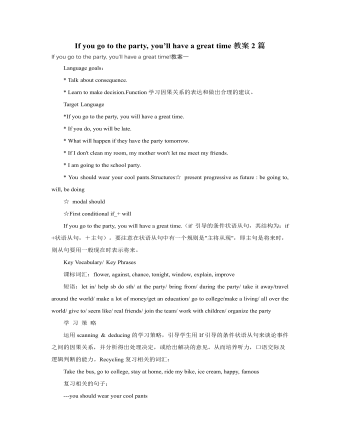
人教版新目标初中英语八年级下册If you go to the party, you’ll have a great time教案2篇
- 页数:25页
- |大小:200.00KB

人教版新目标初中英语七年级上册Do you want to go to a movie教案
- 页数:14页
- |大小:82.50KB
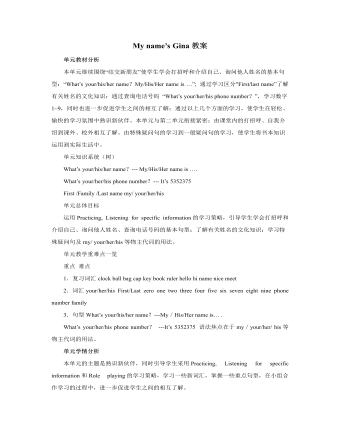
人教版新目标初中英语七年级上册My name’s Gina教案
- 页数:10页
- |大小:63.50KB
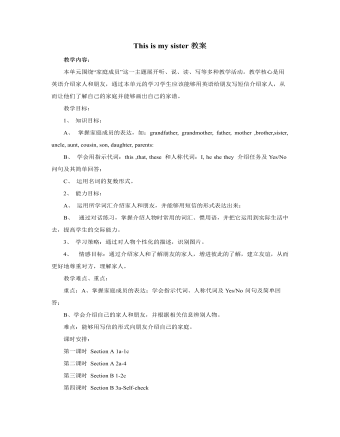
人教版新目标初中英语七年级上册This is my sister教案
- 页数:12页
- |大小:79.00KB
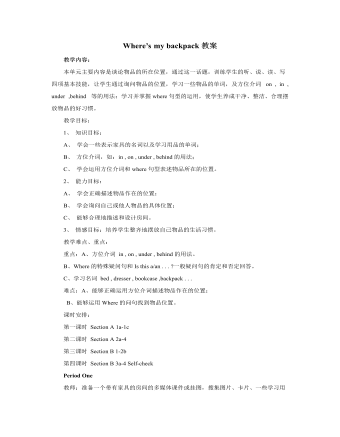
人教版新目标初中英语七年级上册Where’s my backpack教案
- 页数:16页
- |大小:104.00KB
热门课件教案
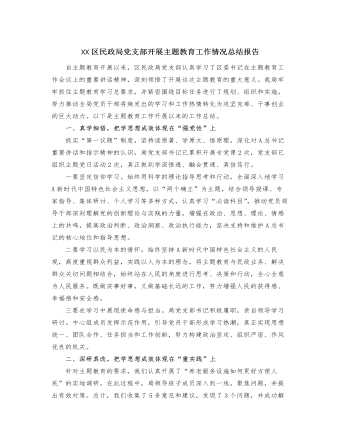
XX区民政局党支部开展主题教育工作情况总结报告
- 页数:3页
- |大小:24.47KB
- 课件教案
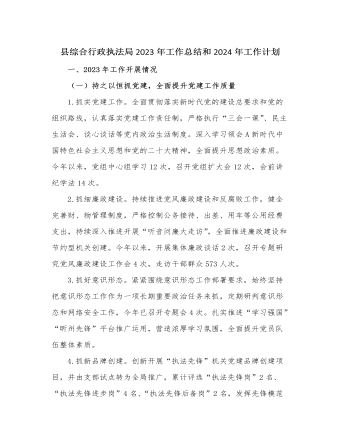
县综合行政执法局2023年工作总结和2024年工作计划
- 页数:8页
- |大小:28.37KB
- 课件教案

交通运输局在巡回指导组主题教育阶段性工作总结推进会上的汇报发言
- 页数:4页
- |大小:33.41KB
- 课件教案
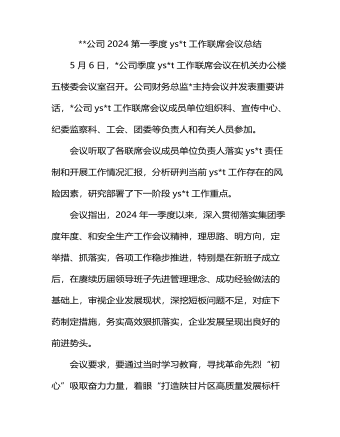
公司2024第一季度意识形态工作联席会议总结
- 页数:6页
- |大小:141.67KB
- 课件教案
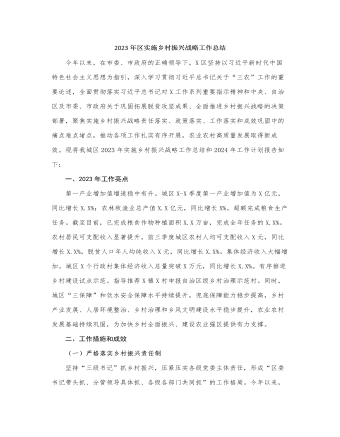
2023年区实施乡村振兴战略工作总结
- 页数:6页
- |大小:27.90KB
- 课件教案
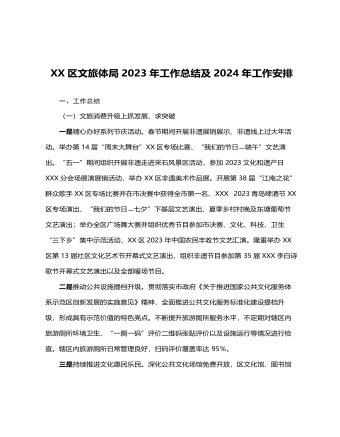
XX区文旅体局2023年工作总结 及2024年工作安排
- 页数:8页
- |大小:32.41KB
- 课件教案
今日更新
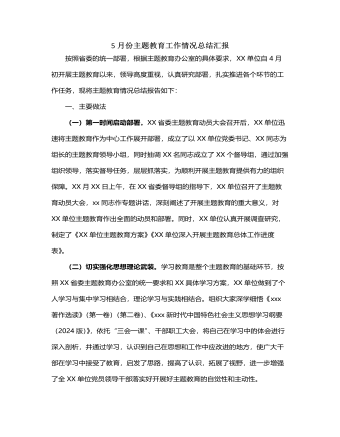
5月份主题教育工作情况总结汇报
- 页数:3页
- |大小:136.87KB

××县招商局2024年上半年工作总结
- 页数:12页
- |大小:142.54KB
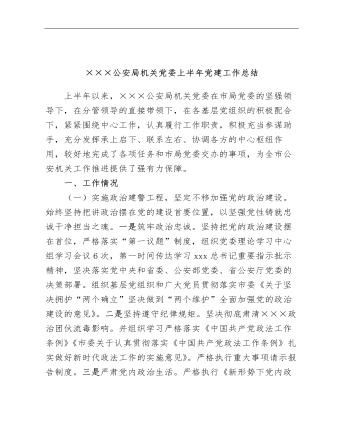
×××公安局机关党委上半年党建工作总结
- 页数:7页
- |大小:186.25KB

《2019—2024年全国党政领导班子建设规划纲要》实施情况的工作总结3800字
- 页数:6页
- |大小:29.16KB
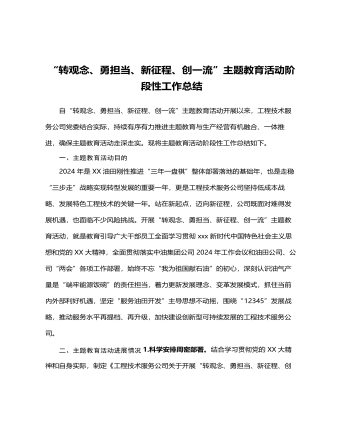
“转观念、勇担当、新征程、创一流”主题教育活动阶段性工作总结
- 页数:3页
- |大小:22.76KB

“四零”承诺服务创建工作总结
- 页数:5页
- |大小:39.83KB











